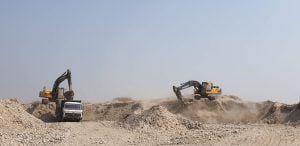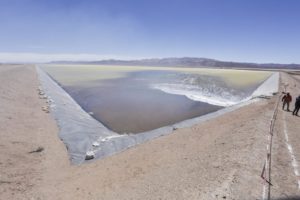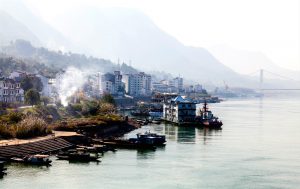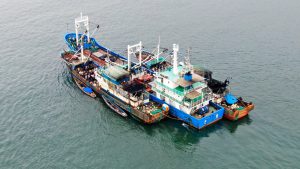Rapid sea level rise and accelerated melting of glaciers due to global warming will increasingly disrupt lives of more than 1.4 billion people living in mountainous and coastal areas unless urgent steps are taken to control greenhouse gas emissions, a landmark scientific report by the Intergovernmental Panel on Climate Change warned on Wednesday.
Along with the ocean, the cryosphere – the frozen parts of the planet – plays a critical role for life on Earth. As many as 670 million people in high mountain regions and 680 million people in low-lying coastal zones depend directly on these systems. Four million people live permanently in the Arctic, and small island nations are home to 65 million people.
Global warming has already reached 1 degree Celsius above the preindustrial level due to greenhouse gas emissions, mainly carbon dioxide. “There is overwhelming evidence that this is resulting in profound consequences for ecosystems and people. The ocean is warmer, more acidic and less productive. Melting glaciers and ice sheets are causing sea level rise, and coastal extreme events are becoming more severe,” according to the Special Report on the Ocean and Cryosphere in a Changing Climate.
The Summary for Policymakers (SPM) of the special report was approved on Tuesday at the 51st session of the IPCC, the United Nations body for assessing the science related to climate change. For the report, over 100 authors from 36 countries assessed the latest scientific literature related to the oceans and cryosphere, referencing about 7,000 scientific publications.
“Over the last decades, global warming has led to widespread shrinking of the cryosphere, with mass loss from ice sheets and glaciers, reductions in snow cover and Arctic sea ice extent and thickness, and increased permafrost temperature,” the SPM said. “Global mean sea level is rising, with acceleration in recent decades due to increasing rates of ice loss from the Greenland and Antarctic ice sheets, as well as continued glacier mass loss and ocean thermal expansion. Increases in tropical cyclone winds and rainfall, and increases in extreme waves, combined with relative sea level rise, exacerbate extreme sea level events and coastal hazards.”
The IPCC has called for a sharp reduction in emissions to counteract some of the impacts of these global changes. “If we reduce emissions sharply, consequences for people and their livelihoods will still be challenging, but potentially more manageable for those who are most vulnerable,” said Hoesung Lee, Chair of the IPCC.
The latest IPCC report provides new evidence for the benefits of limiting global warming to the lowest possible level – in line with the goal that governments set themselves in the 2015 Paris Agreement.
People in mountain regions are increasingly exposed to hazards and changes in water availability, the report said. Glaciers, snow, ice and permafrost are declining and will continue to do so. This is projected to increase hazards for people, through landslides, avalanches, rockfalls and floods. As mountain glaciers retreat, they are also altering water availability downstream, with implications for agriculture, hydropower, industrial and domestic use.
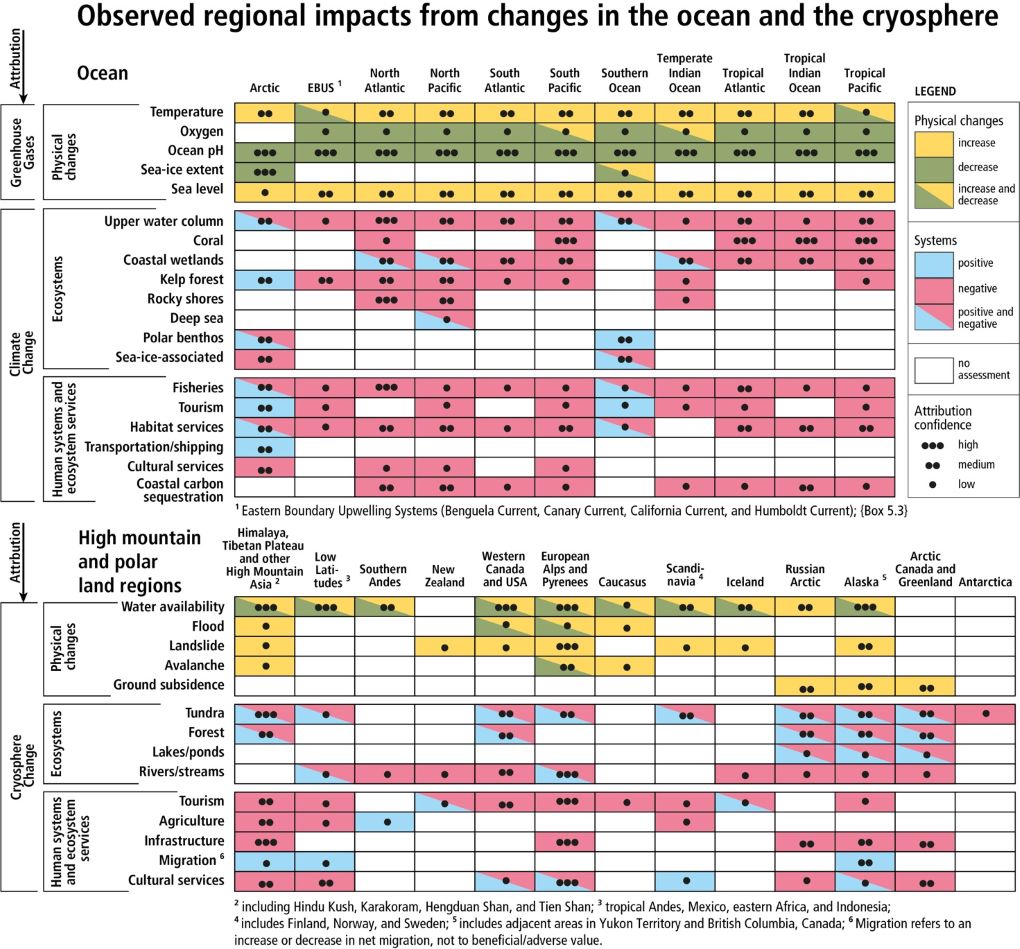
Glaciers and ice sheets in polar and mountain regions are losing mass, contributing to an increasing rate of sea level rise, together with expansion of the warmer ocean, the report said. While sea level has risen globally by around 15 cm during the 20th century, it is currently rising more than twice as fast, 3.6 mm per year, and the rise is still accelerating.
Sea level rise will increase the frequency of extreme events that occur during high tides and intense storms. Indications are that with any degree of additional warming, events that occurred once per century in the past will occur every year by mid-century in many regions, increasing risks for many low-lying coastal cities and small islands, the report said.
Without major investments in adaptation, people in coastal regions would be exposed to escalating flood risks. Some islands are likely to become uninhabitable. Increases in tropical cyclone winds and rainfall are exacerbating extreme sea level events and coastal hazards.
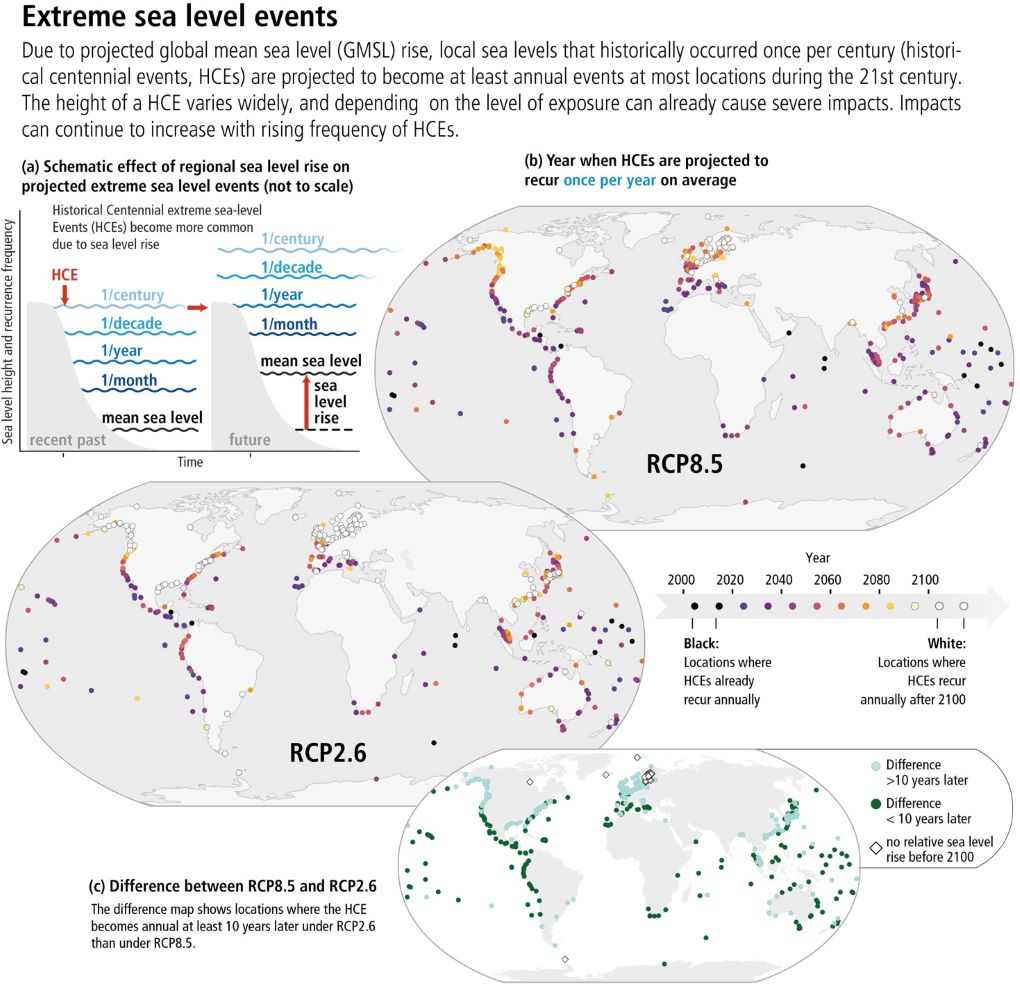
Adaptation the way out, but has limits
The IPCC has noted that municipalities and industry are beginning to address infrastructure failures associated with flooding and thawing permafrost and some coastal communities have planned for relocation. But limited funding, skills, capacity, and institutional support to engage meaningfully in planning processes have challenged adaptation. A diversity of responses has been implemented worldwide, mostly after extreme events, but also some in anticipation of future sea level rise, as in the case of large infrastructure.
The experts say things will get much worse unless adaptation efforts are increased. In such a scenario, annual coastal flood damages are projected to increase by two to three times by 2100 compared to today. Of course, if greenhouse gas emissions are controlled and there is a consequent slower rate of climate-related ocean and cryosphere change, that will provide greater adaptation opportunities. But it is not going to be the same everywhere. The report says, “While there is high confidence that ambitious adaptation, including governance for transformative change, has the potential to reduce risks in many locations, such benefits can vary between locations. At global scale, coastal protection can reduce flood risk by 2–3 orders of magnitude during the 21st century, but depends on investments on the order of tens to several hundreds of billions of US dollars per year. While such investments are generally cost efficient for densely populated urban areas, rural and poorer areas may be challenged to afford such investments with relative annual costs for some small island states amounting to several percent of GDP. Even with major adaptation efforts, residual risks and associated losses are projected to occur.
A major challenge identified by the IPCC is that efforts such as marine protected areas, spatial plans and water management systems are often too fragmented across administrative boundaries and sectors to provide integrated responses to the increasing and cascading risks from climate-related changes in the ocean and/or cryosphere. In high mountains, coastal regions and small islands, there are also difficulties in coordinating climate adaptation responses, due to the many interactions of climatic and non-climatic risk drivers, such as inaccessibility, demographic and settlement trends, or land subsidence caused by local activities across scales, sectors and policy domains.
But the far-reaching services and options provided by ocean and cryosphere-related ecosystems can be supported by protection, restoration, precautionary ecosystem-based management of renewable resource use, and the reduction of pollution and other stressors. The experts point out that integrated water management and ecosystem-based adaptation approaches reduce climate risks locally and provide multiple societal benefits. However, there are ecological, financial, institutional and governance constraints to such actions, and in many contexts, ecosystem-based adaptation will only be effective under the lowest levels of warming.
Restoration of vegetated coastal ecosystems, such as mangroves, tidal marshes and seagrass meadows could provide climate change mitigation through increased carbon uptake and storage of around 0.5% of current global emissions annually. Improved protection and management can reduce carbon emissions from these ecosystems. Together, these actions also have multiple other benefits, such as providing storm protection, improving water quality, and benefiting biodiversity and fisheries. But the higher the sea levels rise, the more challenging is coastal protection, mainly due to economic, financial and social barriers. In the coming decades, reducing local drivers of exposure and vulnerability such as coastal urbanisation and human-induced subsidence constitute effective responses.
In yet another warning, the report points out that despite the large uncertainties about the magnitude and rate of post 2050 sea level rise, many coastal decisions with time horizons of decades to over a century are being made now for critical infrastructure, coastal protection works, city planning. These can be improved by taking relative sea-level rise into account, favouring flexible responses supported by monitoring systems for early warning signals, periodically adjusting decisions, using robust decision-making approaches, expert judgement, scenario-building, and multiple knowledge systems, it says.
Overall, says the report, intensifying cooperation and coordination among governing authorities across scales, jurisdictions, sectors, policy domains and planning horizons can enable effective responses to changes in the ocean, cryosphere and to sea level rise. Regional cooperation, including treaties and conventions, can support adaptation action; however, the extent to which responding to impacts and losses arising from changes in the ocean and cryosphere is enabled through regional policy frameworks is currently limited. Institutional arrangements that provide strong multiscale linkages with local and Indigenous communities benefit adaptation. Coordination and complementarity between national and transboundary regional policies can support efforts to address risks to resource security and management, such as water and fisheries.
Using strong words by IPCC standards, the experts say that prioritising measures to address social vulnerability and equity underpins efforts to promote fair and just climate resilience and sustainable development, and can be helped by creating safe community settings for meaningful public participation, deliberation and conflict resolution.
“We will only be able to keep global warming to well below 2 degrees Celsius above preindustrial levels if we effect unprecedented transitions in all aspects of society, including energy, land and ecosystems, urban and infrastructure as well as industry,” said Debra Roberts, Co-Chair of IPCC’s working group on impacts, adaptation and vulnerability. “The ambitious climate policies and emissions reductions required to deliver the Paris Agreement will also protect the ocean and cryosphere – and ultimately sustain all life on Earth.”
Anjal Prakash, one of the coordinating lead authors of this special report and associate professor at the TERI School of Advanced Studies, pointed out that climate change impacts differ between regions. “They tend to fall disproportionately on the poor and those least able to deal with them.”
Reacting to the report, Harjeet Singh, global lead on climate change for the NGO ActionAid, said, “This may lead to conflicts over scarce resources. The world must unite and act urgently or face total chaos. Rich countries have a bigger responsibility to dramatically cut their carbon pollution and to help the most vulnerable people prepare for the possible climate catastrophe.”
Kat Kramer, Christian Aid’s global climate lead, said, “The climate crisis is a reality, we need leaders to show us they understand this and bring an end to the fossil fuelled era as soon as possible.”
Andrew Norton, director of the International Institute for Environment and Development, said, “The rate and magnitude of change to the ocean, glaciers and ice sheets are happening much faster than previously predicted. The climate emergency must be met with equally accelerated action. Rich countries must step up their response to tackling climate change. The countries most able and historically responsible urgently need to make bigger cuts in emissions, transfer appropriate technologies and provide the money they committed to help developing countries cope with the climate crisis.”
![<p>A small glacier in the Pir Panjal range of the Himalayas that is now melting too early in the spring to provide irrigation water to the valley below when the farmers need it [image by: Joydeep Gupta]</p>](https://dialogue.earth/content/uploads/2019/11/glacier-in-the-Pir-Panjal.jpg)

